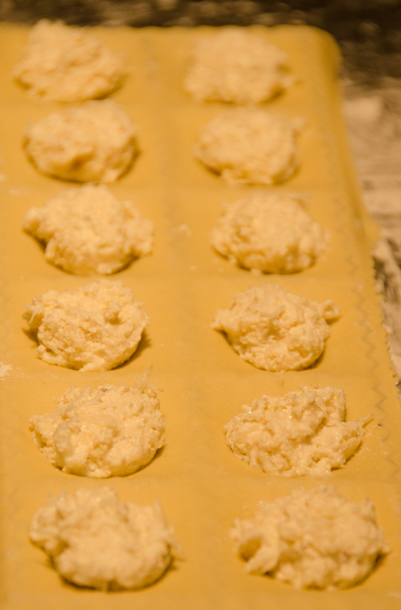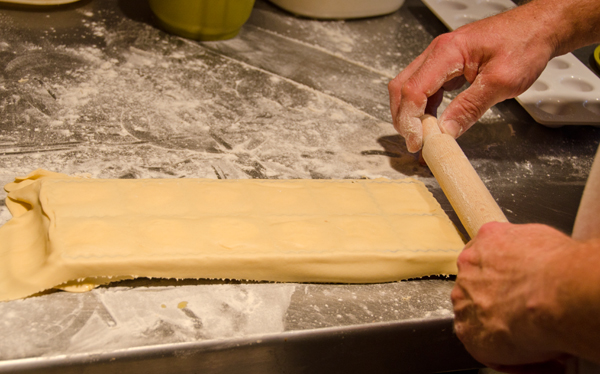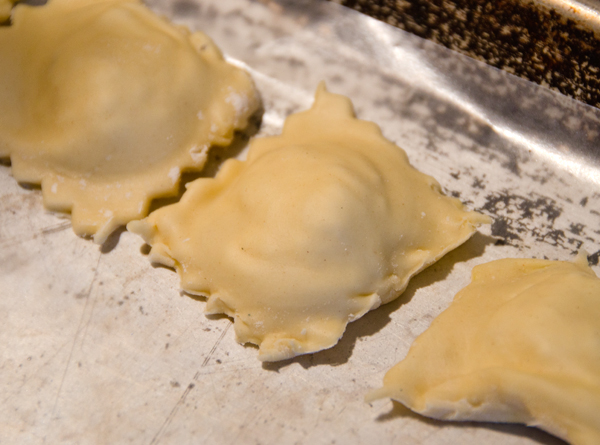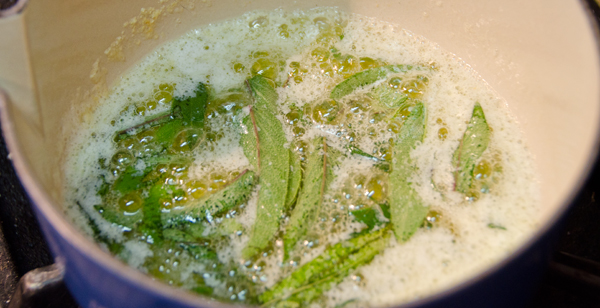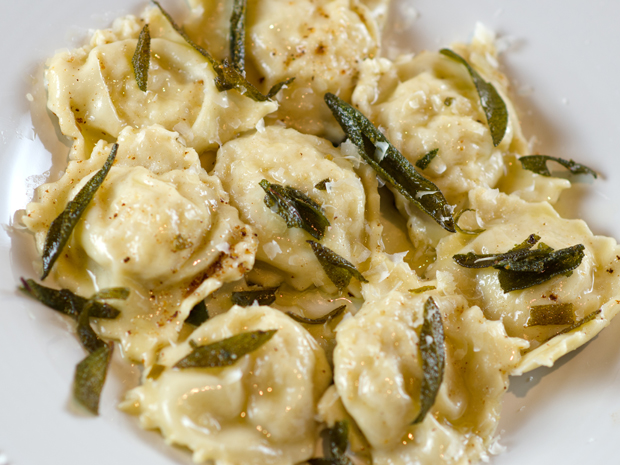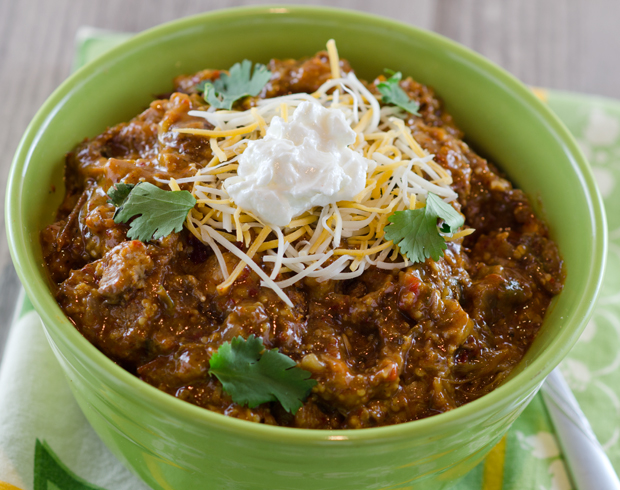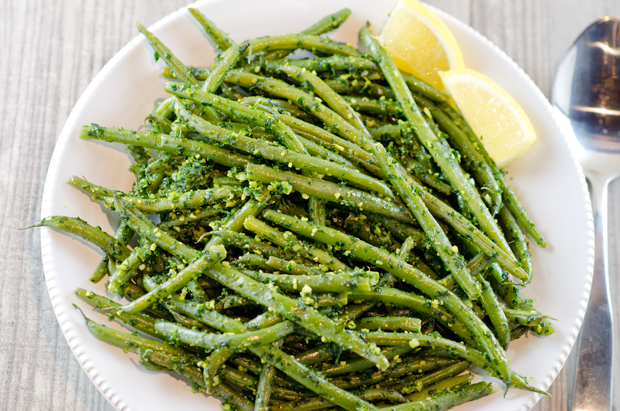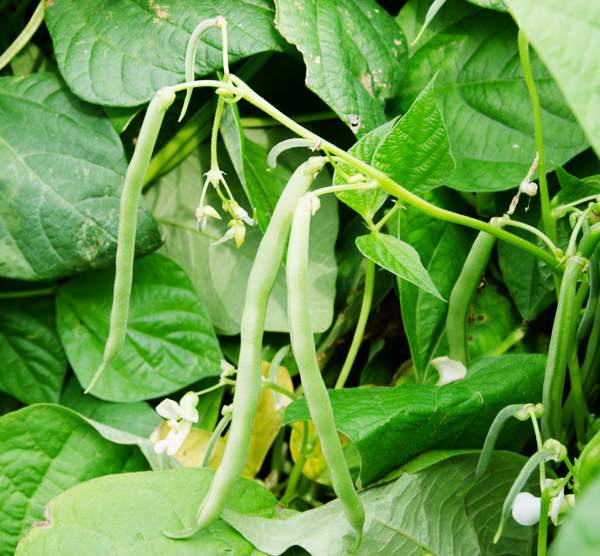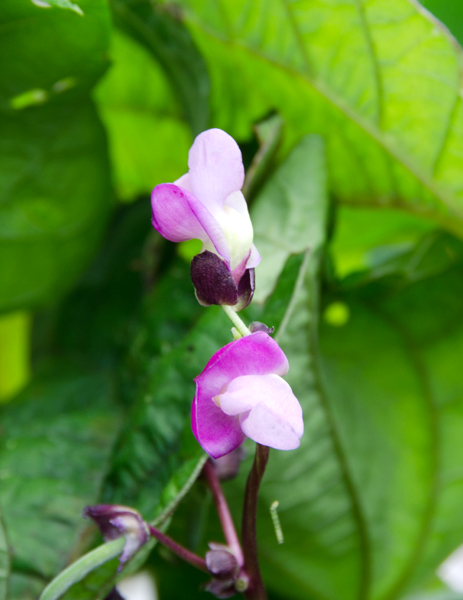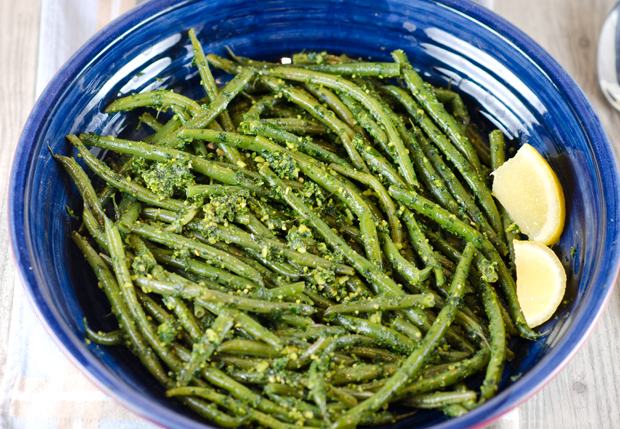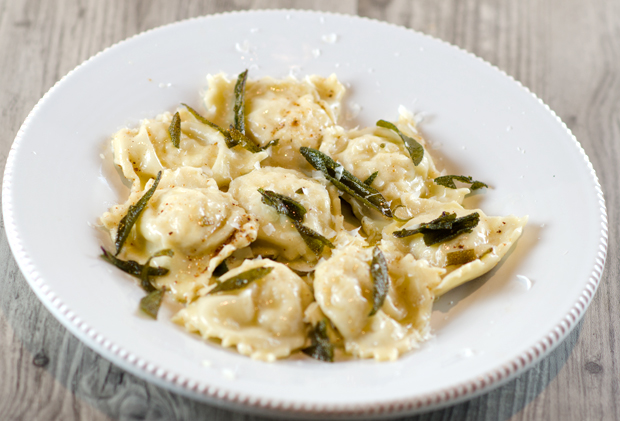 A pasta course featuring ravioli is a part of both our Christmas eve and Christmas day dinners. The white wine pasta recipe from Bon Appetit is one that we have been using for almost 25 years now. Sometimes the filling is spinach and pine nuts, occasionally double mushroom and for this meal, a delicate crab meat.
A pasta course featuring ravioli is a part of both our Christmas eve and Christmas day dinners. The white wine pasta recipe from Bon Appetit is one that we have been using for almost 25 years now. Sometimes the filling is spinach and pine nuts, occasionally double mushroom and for this meal, a delicate crab meat.
Buy a good quality crab to let it’s natural sweetness shine through.Lump crab meat is not as expensive as jumbo lump and is fine to use since you will be combining it with creamy ricotta cheese. Be certain to pick over the crab, even the best brands that claim to be picked through will have small bits of shell in it. Better you find that piece of shell before your guest bites into it. I like to spread it out on a baking sheet and put it under a broiler for just a few seconds Any pieces of shell will turn red and will be easy to pick out.
The pasta comes together quickly in the food processor and only needs a twenty minute rest. We used a ravioli mold to ensure even cuts and cut the pasta with a crimp pastry wheel. As I mentioned in a previous post, pasta making takes a definite time committment, some patience and a nice long counter top to roll out the pasta. The pasta could be rolled out by hand and a biscuit cutter can take the place of the ravioli mold. Easier still, substitute spring roll wrappers which are thinner than won ton wrappers for the pasta.
The browned butter sage sauce was the perfect accompaniment to the pasta. Cooking the leaves in the butter gives them a little crunch. We still have sage in the garden so I didn’t have to pay a fortune in a supermarket (like they would have fresh sage) for a few sad leaves.
Leftover ravioli can be frozen on baking sheets and transferred to freezer bags. Cook the ravioli right from the freezer for a delicious impromptu meal.
Crab Ravioli with Browned Butter and Sage Sauce
- 1 cup ricotta cheese (8 ounces)
- 1 cup lump crabmeat, (8 ounces)
- Coarse salt and freshly ground pepper
- 1/8 teaspoon red-pepper flakes
Directions
- Mix together ricotta, crabmeat, 1/2 teaspoon salt, 1/8 teaspoon pepper, and the red-pepper flakes.
White Wine Pasta
Ingredients
- 2 chilled large eggs
- 1/4 c or more dry white wine
- Pinch of salt
- 2c or more unbleached all purpose flour
Directions
White Wine Pasta
- Combine eggs, 1/4c wine and salt in processor. With machine running add 2 cups flour through feed tube. Process until slightly sticky dough ball forms. If dough is very sticky, add more flour through feed tube 1 tablespoon at a time, incorporating each addition before adding the next. If dough is dry, add more wine through the feed tube 1 teaspoon at a time, incorporating each addition before adding next. Process dough for 20 seconds more.
- Knead dough on lightly floured surface until smooth elastic and no longer sticky, about 5 minutes. Wrap in plastic. Let rest at room temperature 20 minutes or up to 2 hours.
Rolling Dough and Forming Ravioli
- All purpose flour
- 1 egg, beaten to blend
Directions
- Cover baking sheets with waxed paper. Cut dough into 4 pieces. Flatten 1 piece (keep remainder wrapped) and dust with flour. Turn pasta machine to widest setting and run dough through twice. Sprinkle with flour, fold in half and run dough through machine twice.
- Adjust machine to next narrower setting. Run dough through machine 5 times, folding in half and flouring before each run. Repeat narrowing rollers and running dough through machine 5 times at each setting until the dough is thin enough to see color of the skin on your hand through it; use less flour each time as dough loses stickiness (narrowest setting on machine with 6 settings, second to narrowest setting on machine with 8 settings).
- Arrange dough on floured work surface. Cut in half crosswise. Cover 1 piece with plastic. Brush remaining piece with egg. Top with 2 rows of 1/2 tablespoon mounds of filling, spacing 1 inch from the edges and 1 inch apart. Top with second dough sheet. Press with side of hand between mounds of filling down center, then crosswise, forcing out any trapped air. Cut between mounds to form large squares, using pasta cutting wheel or knife. Transfer ravioli to prepared baking sheets. Press edges of ravioli together to seal. Repeat rolling, filling and cutting with remaining dough pieces and filling. (Can be prepared ahead. cover with plastic wrap and refrigerated 1 day or freeze until solid. Transfer to freezer containers and freeze up to 1 month. Cook ravioli directly from refrigerator or freezer.)
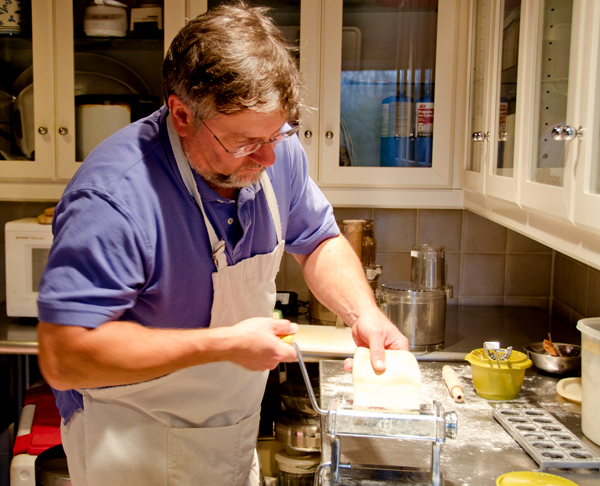
Cooking Ravioli
- Preheat oven to lowest setting. Bring a large pot of salted water to a boil. Boil ravioli until just tender, about 10 minutes. Transfer to platter using a slotted spoon. Toss with a little olive oil. Cover with foil and keep warm in oven while preparing sauce.
Brown Butter Sage Sauce
Ingredients
- 20 fresh sage leaves
- 1/2c (1 stick) unsalted butter
- 2T extra virgin olive oil
- 1 lb. pasta
- 1/4c freshly grated Parmigiano-Reggiano cheese
Directions
- Set aside 8 sage leaves for garnish and julienne the remaining leaves.
- In a medium saucepan, melt the butter over medium heat until it foams. Add the olive oil and the julienned sage leaves. cook, stirring, over medium heat until the butter is golden brown-do not burn it! Set aside and keep warm.
- Pour the butter mixture over the pasta, add the Parmigiano-Reggiano, and toss gently. Garnish with whole sage leaves and serve at once.
